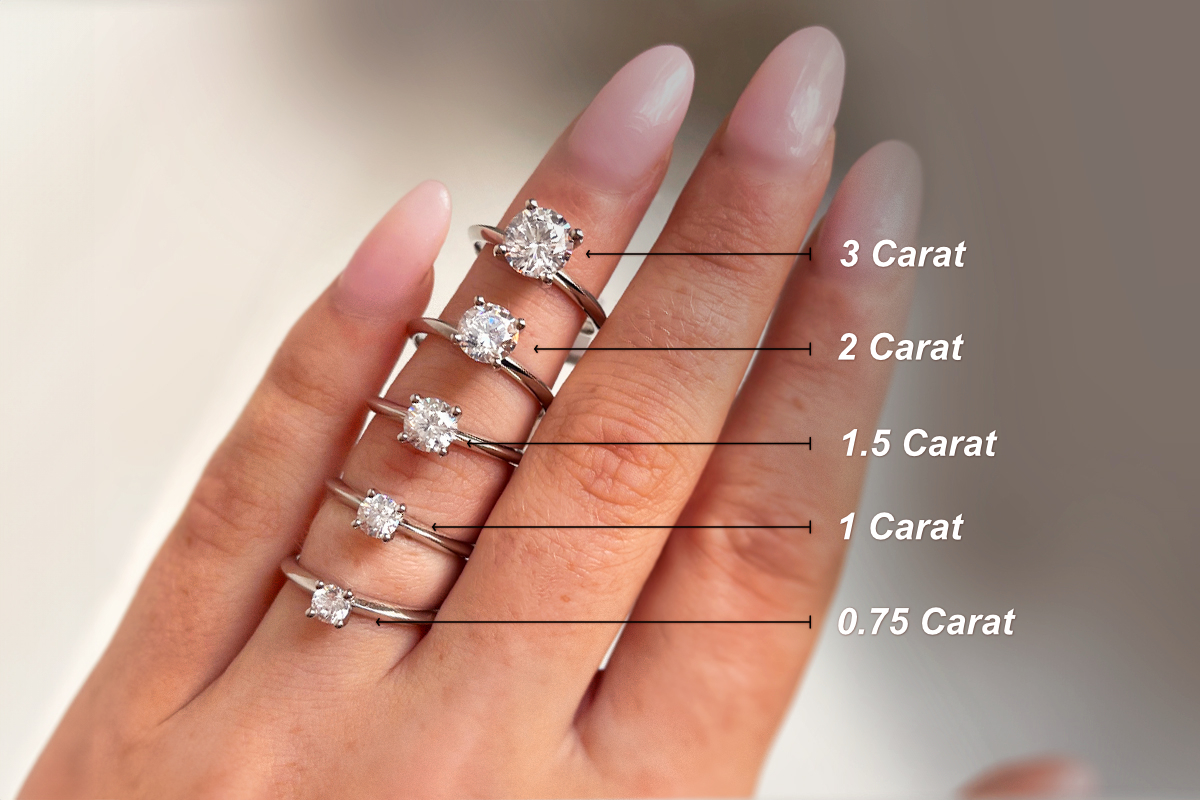When shopping for a lab diamond ring, one of the most important aspects to consider is the ring size. Ensuring the perfect fit not only enhances the comfort of the wearer but also protects the diamond from damage or loss. A ring that is too loose can slip off, while a tight ring may cause discomfort and could damage the ring’s structure over time. Whether you’re purchasing a lab diamond ring size guide engagement ring, wedding band, or a stylish piece of jewelry, knowing how to find the correct ring size is key to a positive experience.
Table of Contents
Understanding Ring Size: A Key Component of Your Lab Diamond Ring
Ring sizes are typically measured by the circumference of your finger. The size is designated by a number, often ranging from 3 to 13 in the U.S. for women, and from 7 to 16 for men. In the U.K., sizes are referred to with letters, and other countries have their own systems (e.g., European sizes use numerical measures).
Popular Ring Size Systems:
- US Ring Size: Most commonly used in the U.S. and some other regions.
- UK Ring Size: Refers to letters like A, B, C, etc.
- European Ring Size: Uses millimeters to measure the inner circumference of the ring.
- Japanese Ring Size: Very similar to the European system, but the numbers are slightly different.
How to Find the Correct Lab Diamond Ring Size
There are several methods you can use to determine the right ring size for your lab diamond ring.
1. Use a Ring Size Chart
If you already have a ring that fits comfortably on the desired finger, you can use a ring size chart to match it. You’ll need to measure the inner diameter of the ring and compare it to the measurements on a chart. This is a simple and quick way to find out your size if you have an existing ring.
2. Measure Your Finger
If you don’t have a ring that fits, you can measure your finger directly. There are several methods to do this:
- Use a Paper Strip or String: Wrap a strip of paper or string around the base of the finger. Mark where the ends overlap, then measure the length with a ruler. Compare the measurement to a ring size chart.
- Use a Ring Sizer Tool: Many jewelers provide free plastic or metal ring sizers that you can use at home. These tools allow you to find your size accurately by slipping the tool over your finger until you find the one that fits snugly.
- Visit a Jeweler: The most accurate way to determine your ring size is by visiting a jeweler who can use specialized tools to measure your finger.
3. Consider the Season
It’s important to remember that your fingers may change size due to weather conditions. In hot weather, your fingers may swell, making a ring feel tighter, while cold weather may cause them to shrink slightly. It’s best to measure your finger when it is at a comfortable, normal temperature.
4. Account for the Band Width
The width of the ring band can affect the fit. Wider bands often feel tighter, while thinner bands may feel looser. If you’re purchasing a lab diamond ring with a wider band, consider going up half a size to ensure a comfortable fit. If the band is particularly thick or has intricate designs, it may require a slightly larger size.
Common Ring Size Adjustments
- Engagement Rings: For engagement rings, you may want to ensure that the ring slides on and off the finger with a bit of resistance (it should not easily slide off, but it shouldn’t be painful to remove, either). Keep in mind that engagement rings are often worn on the left-hand ring finger, which can sometimes be slightly smaller than the right hand.
- Wedding Bands: Wedding bands are typically worn on the same finger as an engagement ring, lab diamonds, so it’s essential to ensure the sizes match for a comfortable fit.
- Stackable Rings: For stackable rings, you may need to account for the space between the rings. Sometimes, a slightly larger size will be necessary to ensure comfort when wearing multiple bands.
Lab Diamond Ring Size Tips
- Check for Resizing: Many jewelers offer resizing services, especially for lab diamond rings. If you’re unsure about the size, you can order a ring that’s slightly larger and have it resized later if necessary.
- Fit vs. Comfort: While a tight fit might seem secure, it can lead to discomfort or difficulty removing the ring. A slightly looser fit is often more comfortable, but it’s important to ensure it’s not too loose to avoid the risk of losing it.
- Consider Finger Shape: If your finger is particularly wide at the base or has a knuckle that’s larger than the rest of your finger, you might need to account for that when determining the right size. A tapered band or a slightly looser fit could make wearing the ring more comfortable.
Conclusion
Choosing the right lab diamond ring size is a crucial part of the buying process, ensuring both comfort and security for the wearer. By using a ring sizer, considering factors like band width, and consulting with professionals, you can select the ideal size for your lab-grown diamond ring. Taking these steps will guarantee that the recipient enjoys their ring for years to come—fitting perfectly, comfortably, and beautifully.

